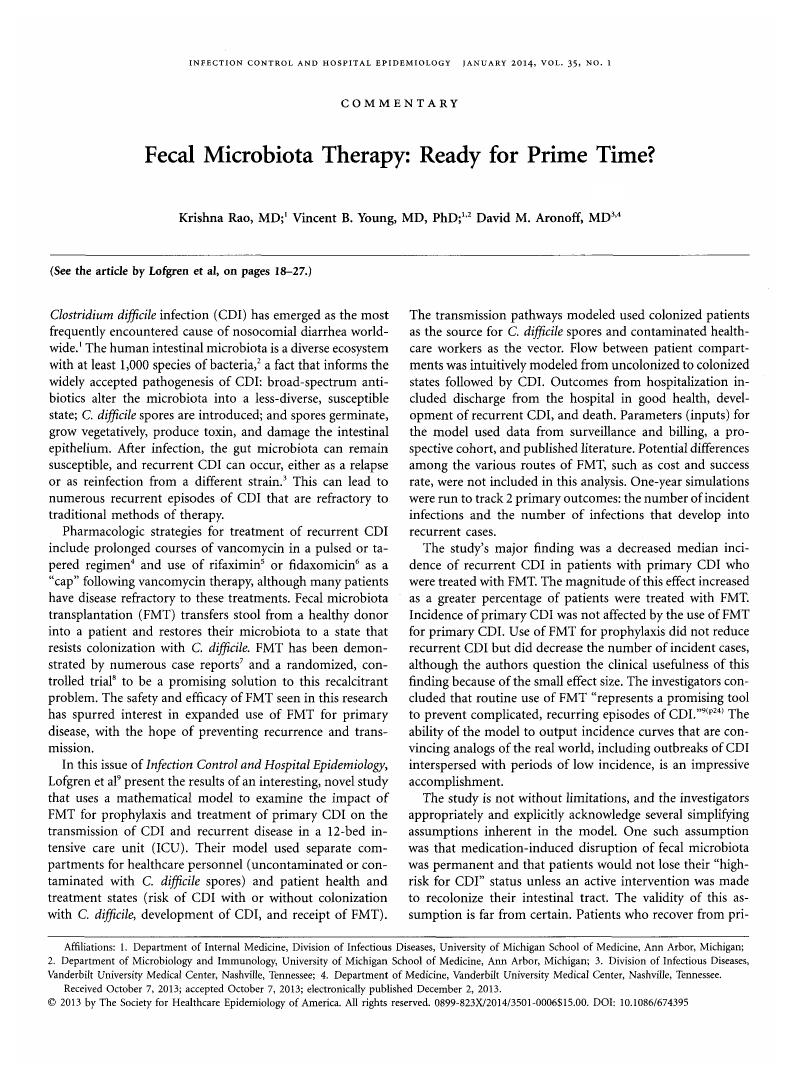Crossref Citations
This article has been cited by the following publications. This list is generated based on data provided by Crossref.
Zilberberg, Marya D.
Shorr, Andrew F.
Micek, Scott T.
and
Kollef, Marin H.
2015.
Clostridium difficile Recurrence Is a Strong Predictor of 30-Day Rehospitalization Among Patients in Intensive Care.
Infection Control & Hospital Epidemiology,
Vol. 36,
Issue. 3,
p.
273.
Lagier, J.-C.
Delord, M.
Million, M.
Parola, P.
Stein, A.
Brouqui, P.
and
Raoult, D.
2015.
Dramatic reduction in Clostridium difficile ribotype 027-associated mortality with early fecal transplantation by the nasogastric route: a preliminary report.
European Journal of Clinical Microbiology & Infectious Diseases,
Vol. 34,
Issue. 8,
p.
1597.
Rao, Krishna
and
Young, Vincent B.
2015.
Fecal Microbiota Transplantation for the Management of Clostridium difficile Infection.
Infectious Disease Clinics of North America,
Vol. 29,
Issue. 1,
p.
109.
Hirsch, Bruce E
Saraiya, Nimit
Poeth, Kaitlin
Schwartz, Rebecca M
Epstein, Marcia E
and
Honig, Gerard
2015.
Effectiveness of fecal-derived microbiota transfer using orally administered capsules for recurrent Clostridium difficile infection.
BMC Infectious Diseases,
Vol. 15,
Issue. 1,
Rao, Krishna
and
Safdar, Nasia
2016.
Fecal microbiota transplantation for the treatment of Clostridium difficile infection.
Journal of Hospital Medicine,
Vol. 11,
Issue. 1,
p.
56.
Pettigrew, Melinda M.
Johnson, J. Kristie
and
Harris, Anthony D.
2016.
The human microbiota: novel targets for hospital-acquired infections and antibiotic resistance.
Annals of Epidemiology,
Vol. 26,
Issue. 5,
p.
342.
Soto Ocaña, Joshua
Bayard, Nile U
and
Zackular, Joseph P
2022.
Pain killers: the interplay between nonsteroidal anti-inflammatory drugs and Clostridioides difficile infection.
Current Opinion in Microbiology,
Vol. 65,
Issue. ,
p.
167.



